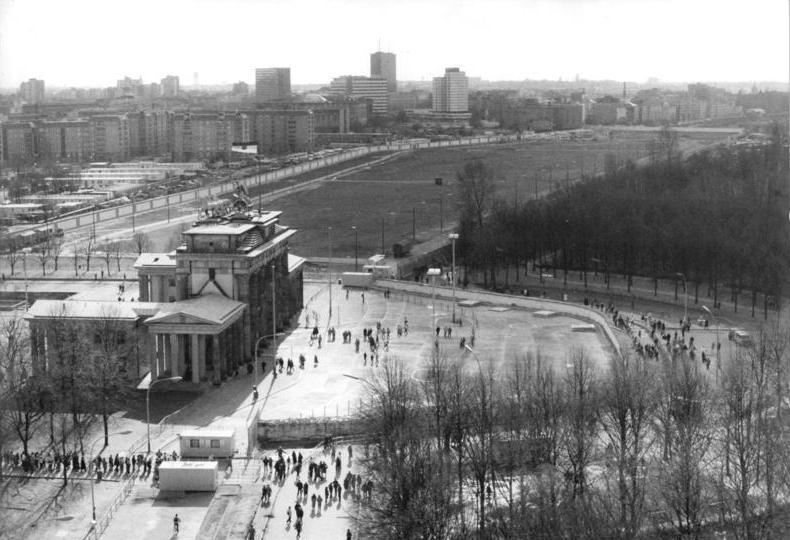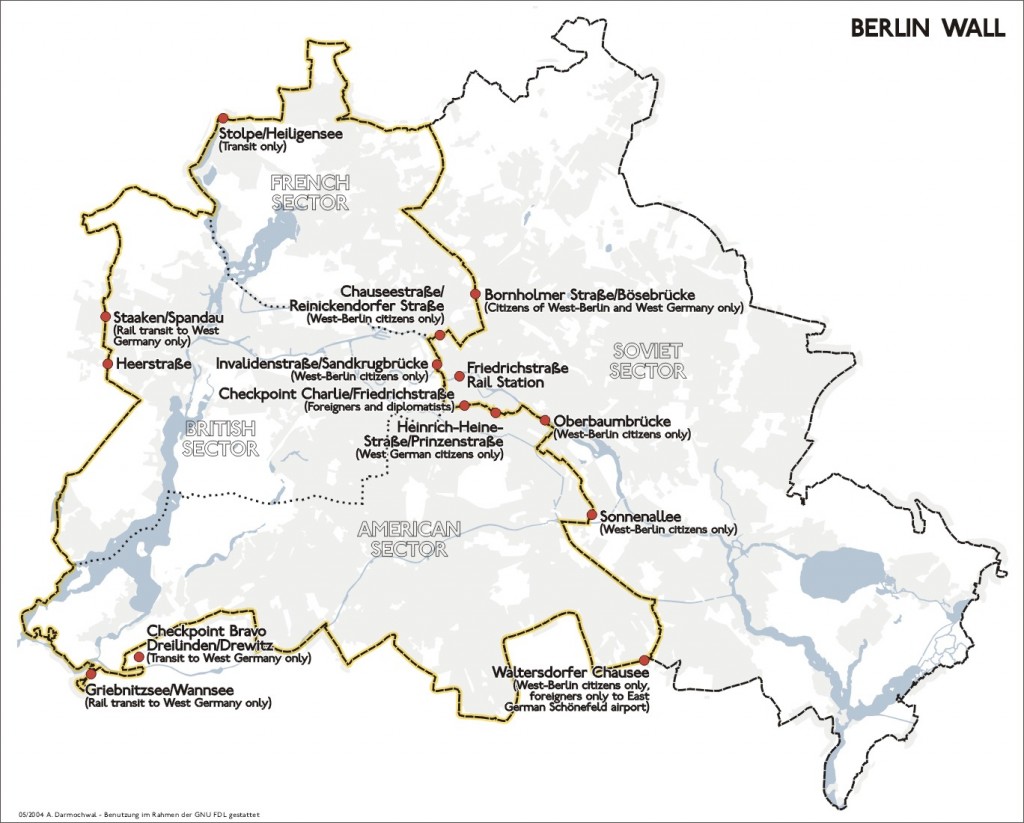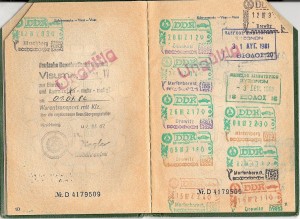Documentation
Crossing the Wall

The Brandenburg Gate with its two crossing checkpoints.
The Berlin border crossings were created as a result of the postwar division of Germany. Prior to the construction of the Berlin Wall in 1961, travel between the Eastern and Western sectors of Berlin was totally uncontrolled, although restrictions were increasingly introduced by the Soviet and East German authorities at major crossings between the sectors. This free access, especially after the closure of the Inner German border, allowed the Eastern Bloc emigration and which resulted in the erection of the Berlin Wall.
After the construction of the Berlin Wall in 1961, border stations between East Berlin. Although there were few crossings at first, more sites were built to an increasing extent over the wall’s lifespan. Many crossed the wall illegally, climbing over it, sailing around it, or digging under it, while many others died while attempting to cross.
Between West Berlin and German Democratic Republic territory, the border stations were developed very effectively on the GDR’s side. Border officials and customs agents would monitor incoming and outgoing traffic according to established procedures. The security of the outward-facing border and of the border crossings was maintained by special security divisions of the GDR border guard troops.
For personal inspections, highly qualified and specially trained forces were used exclusively. The passports, identification cards, etc., could be transmitted from the inspection sites to a processing center using closed-circuit television and ultraviolet light, where they were recorded. At the transit crossings sites for traffic passing into the GDR en route to another country, statistical demographic data about travelers would be recorded travel destination, etc, and travelers would occasionally be inspected.
At Checkpoint Bravo and Checkpoint Charlie, the Allied occupation forces had established checkpoints, but they were not relevant to regular personal and business traffic. They served as processing stations for military units as well as a display of military presence.

Checkpoints: in bold, potential checkpoints according to the map of Stanislav Dravoneg, could cross to West Berlin.
- Bornholmer Straße, on Bornholmer Straße over the Bösebrücke between Berlin-Prenzlauer Berg and Berlin-Wedding for West Berliners, citizens of the Federal Republic, GDR citizens, and diplomats, by road.
- Brandenburg Gate between Berlin-Tiergarten and Berlin-Mitte, opened on 1961. West Berliners gathered on the western side of the gate to demonstrate against the Berlin Wall. Under the pretext that Western demonstrations required it, the East closed the checkpoint the same day, ‘until further notice’, a situation that was to last until 22 December 1989.
- Chausseestraße/Reinickendorfer Straße between Berlin-Wedding and Berlin-Mitte for West Berliners and GDR citizens by road.
- Invalidenstraße/Sandkrugbrücke between Tiergarten and Berlin-Mitte. For West Berliners and GDR citizens by road.
- Checkpoint Charlie between Berlin-Mitte and Berlin-Kreuzberg. For foreigners, diplomats, Allied military personnel and GDR citizens by road.
- Checkpoint Delta: Heinrich-Heine-Straße/Prinzenstraße between Berlin-Mitte and Berlin-Kreuzberg. For citizens of the Federal Republic, GDR citizens and diplomats by road.
- Oberbaumbrücke between Friedrichshain and Berlin-Kreuzberg. For West Berliners and GDR citizens, pedestrians.
- Sonnenallee between Neukölln and Treptow. For West Berliners and GDR citizens by road.
- Friedrichstraße station For West Berliners, citizens of the Federal Republic, foreigners, diplomats, transit travelers and GDR citizens, rail/pedestrian.
